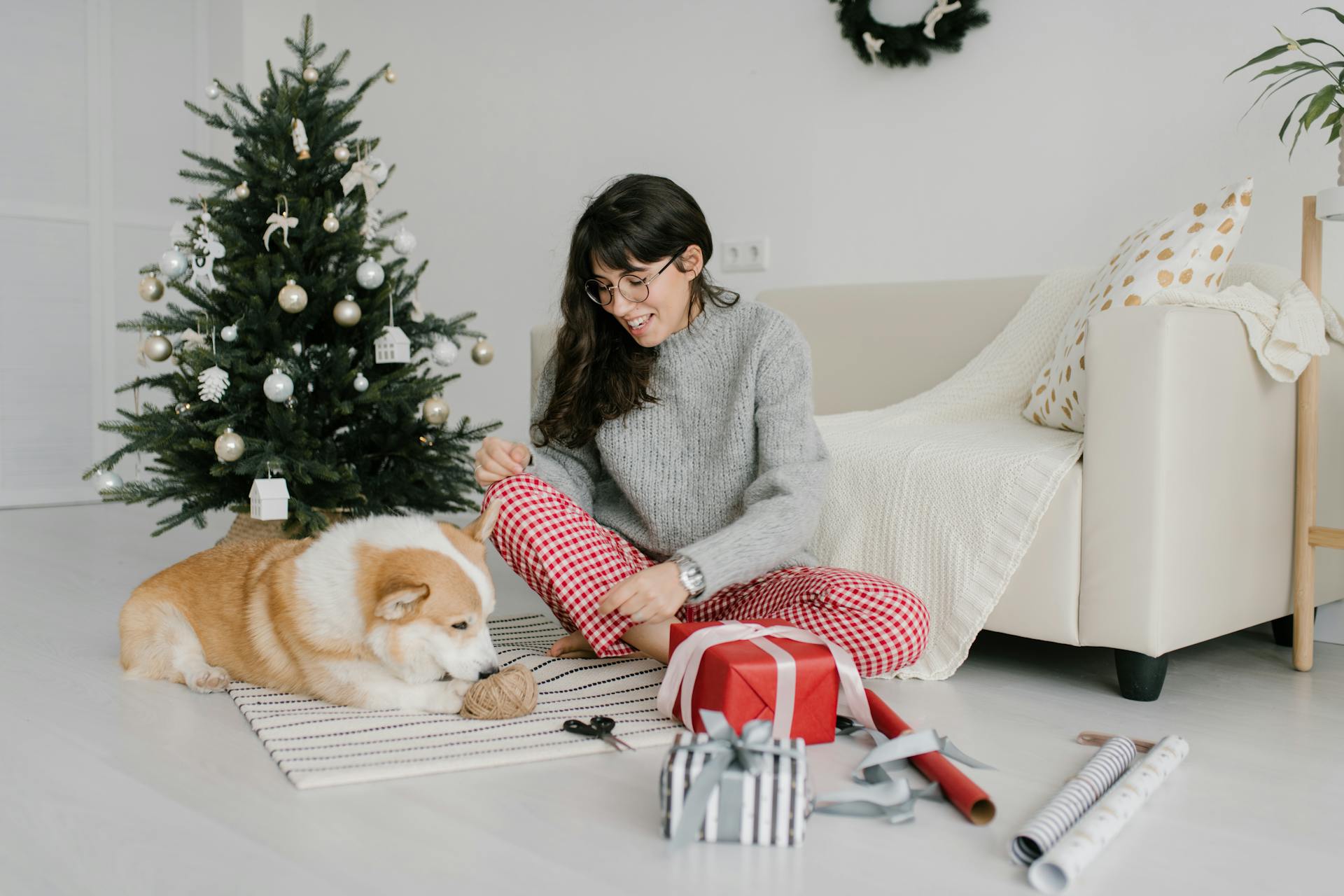
Introducing a new dog to the pack can be a challenging task, but with the right approach, you can create a harmonious home for all your furry friends. It's essential to start by separating the new dog from the existing pack for a few days to prevent any initial aggression.
This initial separation allows the new dog to get used to its new environment without feeling overwhelmed. It also gives you time to observe the new dog's behavior and personality, which will help you tailor your introduction plan.
Before bringing the dogs together, make sure the new dog has a safe space where it can retreat if needed. This could be a crate or a separate room, and it's crucial to provide a familiar object from the new dog's previous home, such as a blanket or toy, to provide comfort and reassurance.
Before the Introduction
First, consider arranging the first meeting between the dogs outside the house, such as a park or another safe area close to home. This will help your current dog feel more comfortable.
It's a good idea to enlist a friend or family member to help you with the introduction. This extra pair of hands will come in handy if things get out of hand.
Take the dogs to a neutral area, not a place where the existing dog sleeps or a bedroom. A garden is a great place to start, as it's usually big enough for both dogs to move around.
Avoid narrow areas inside, such as hallways or corridors, as they can create a sense of competition. It's also best to steer clear of areas where your current dog's resources, like their feeding area, might be at stake.
Preparing Your Home
It's essential to get your home ready for the new addition before the dogs meet. Pack away your current dog's toys, bedding, and food bowls for a while to avoid competition over them.
Get prepared by moving your current dog's bowls or bedding to a different place a few days in advance to minimize disruption. This will help your dogs adjust to the new setup.
Lay out each dog's bowls and bedding in separate areas of the house once you've past the first meeting and hour or two together. This way, each dog can eat, drink, and rest alone in peace.
Household Packing Tips
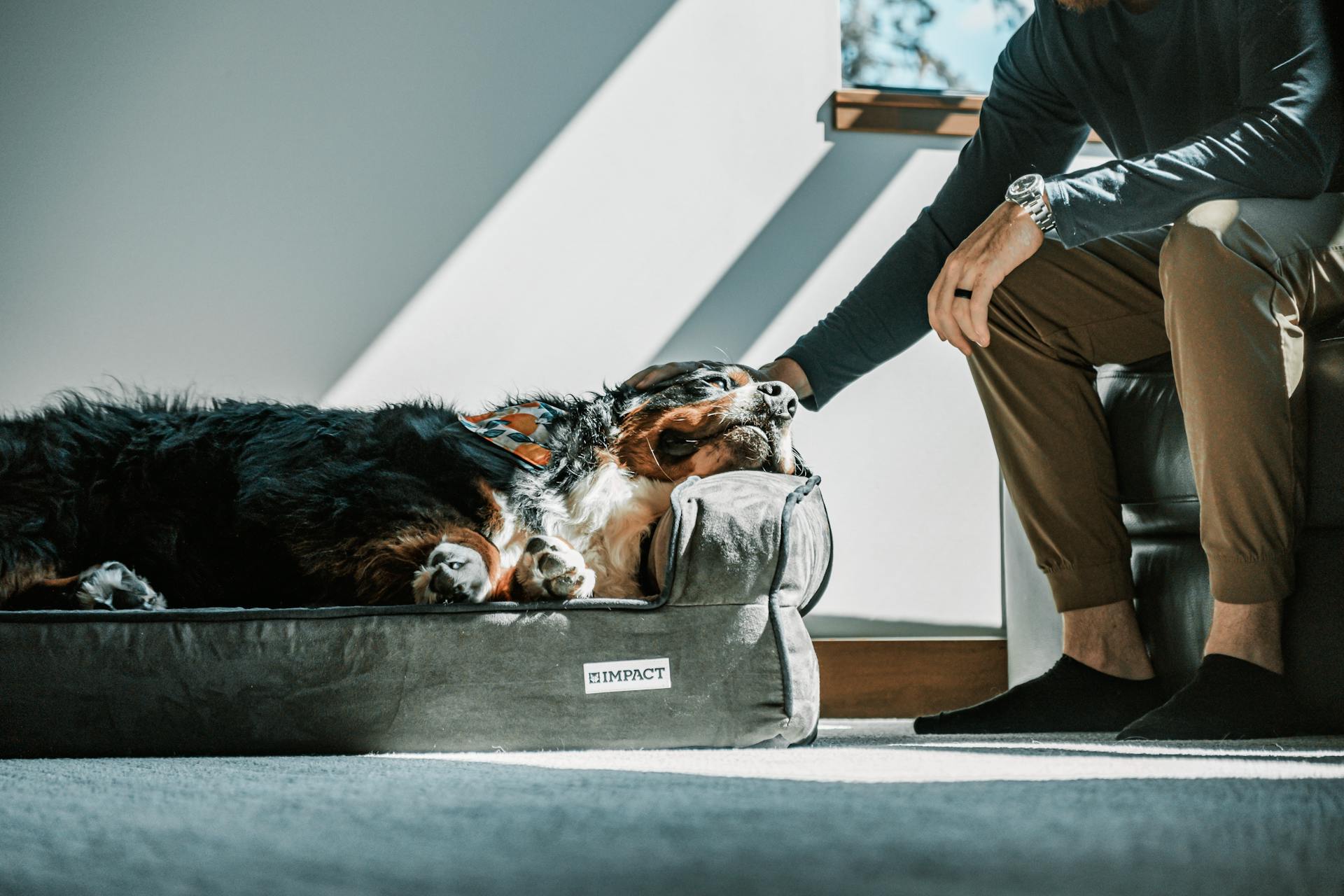
To prepare your home for a new dog, start by getting your current dog set up before the dogs meet.
It's a good idea to prepare your current dog's bowls and bedding by moving them a few days in advance to a different place in the house.
Pack away your current dog's toys, bedding, and food bowls on the day your new dog arrives to avoid competition over them.
Once you've got past the first meeting and first hour or two together, lay out each dog's bowls and bedding in separate areas of the house, so each can eat, drink, and rest alone.
Up-to-Date Vaccinations
You'll want to ensure all your dogs' vaccinations are up to date before introducing them to each other. This is crucial to prevent the spread of infections.
A puppy will be vulnerable to infection from your existing dog until at least one week after they've completed their puppy vaccination course. You should check with your vet to confirm your current dog's vaccination status.
It's essential to choose a safe place for the first meeting, ideally a quiet park or grassy area with low dog traffic. This will minimize the risk of infection.
Additional reading: Dog Ear Infection Packing
Separate Spaces
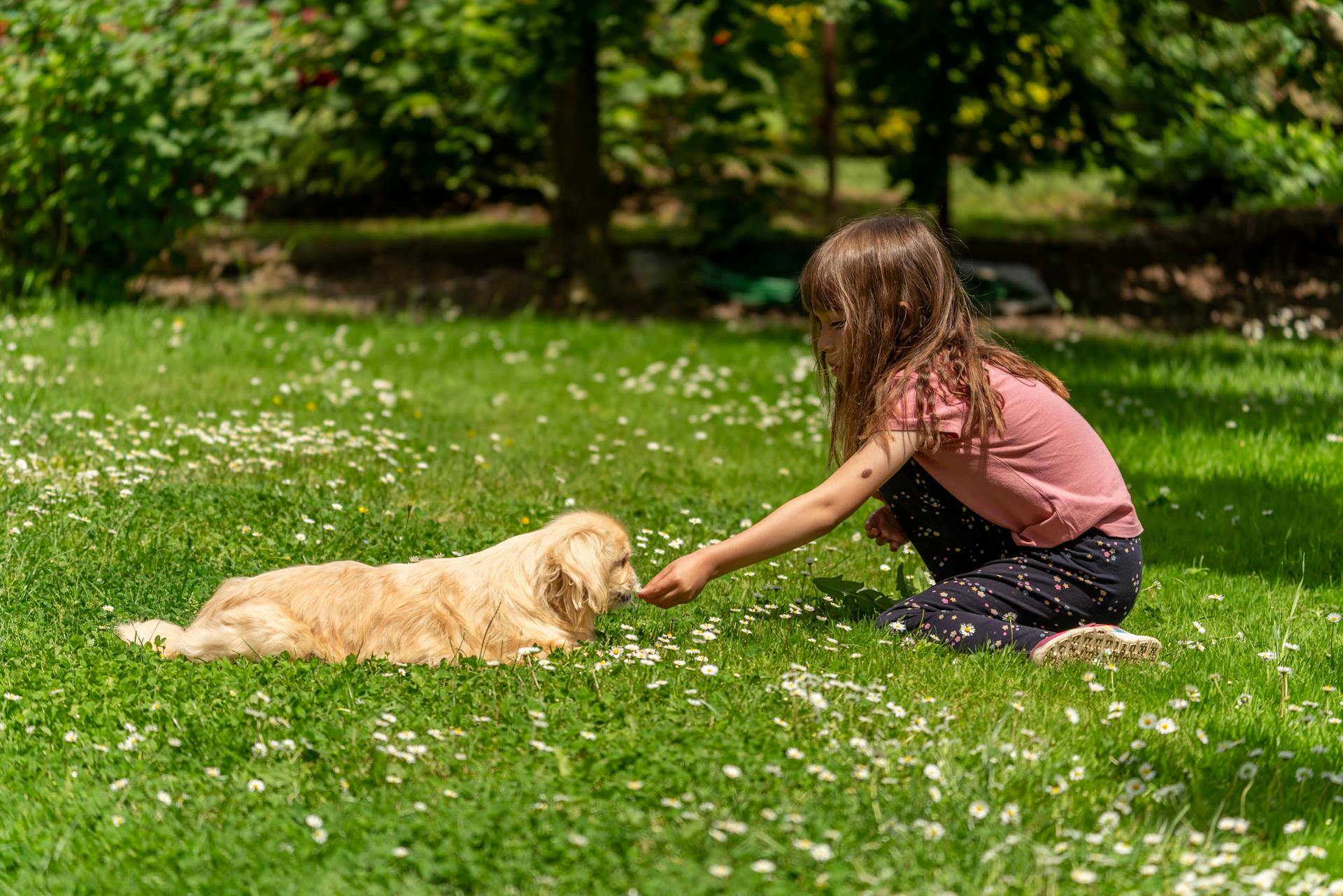
Having separate spaces for your dogs is crucial for a smooth transition. It allows each dog to have one-on-one time with you and reduces competition for resources.
You should separate your dogs' spaces for the first week, giving each dog time to adjust to the new environment. This also helps you bond with each dog separately.
Separate their areas for eating, sleeping, and playing to avoid competition. Feed them in separate rooms or areas to prevent resource guarding.
You can lay out each dog's bowls and bedding in separate areas of the house once you've past the first meeting and hour or two together. This way, each dog can eat, drink, and rest alone in peace.
Having separate spaces also helps you monitor their behavior and interactions closely. You can observe how they interact through a sturdy, tall baby gate, reinforcing positive behavior with high-value treats.
Neutral Territory
Introduce your dogs on neutral territory, such as outdoors, where they can become familiar with each other without feeling provoked.
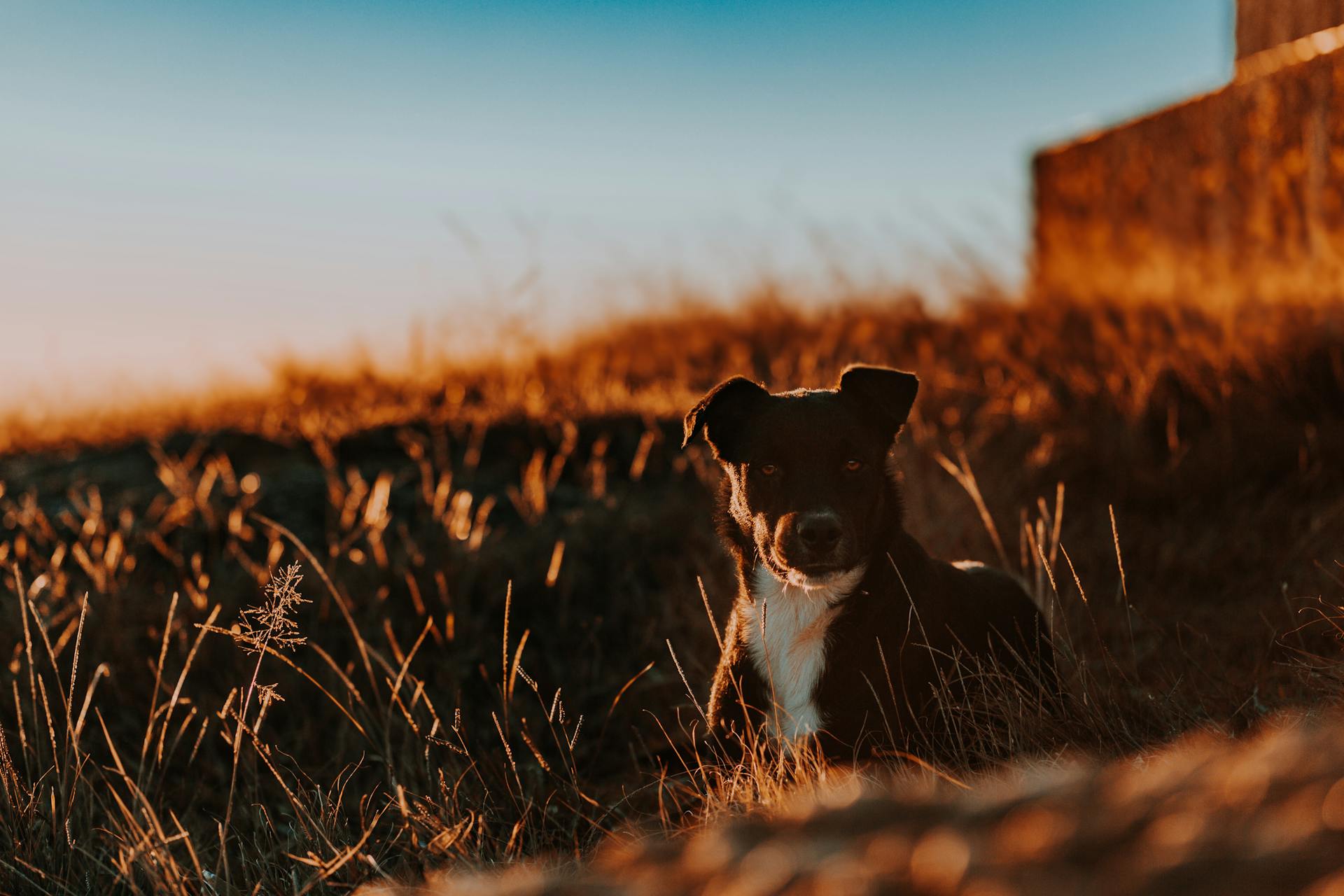
Each dog should be walked separately on a leash, and each walker should have a bag of high-value treats or food broken into small pieces. Reward your dogs with treats just for seeing each other, and say "Good boy!" in a happy, friendly voice when they look at each other.
At first, walk the dogs at a distance where they can see each other but are not too provoked by each other's presence. This allows them to become comfortable with each other's presence without feeling threatened.
By taking introductions slowly and at each dog's pace, you have the best chance to make sure it's a good fit for them both and set them up for a successful life together.
A unique perspective: Is Dog Daycare Good for Dogs
Your Cats
Your cats need some extra TLC when you bring a dog home. Give them some extra one-on-one time with you to help them cope with the stress of the new addition.
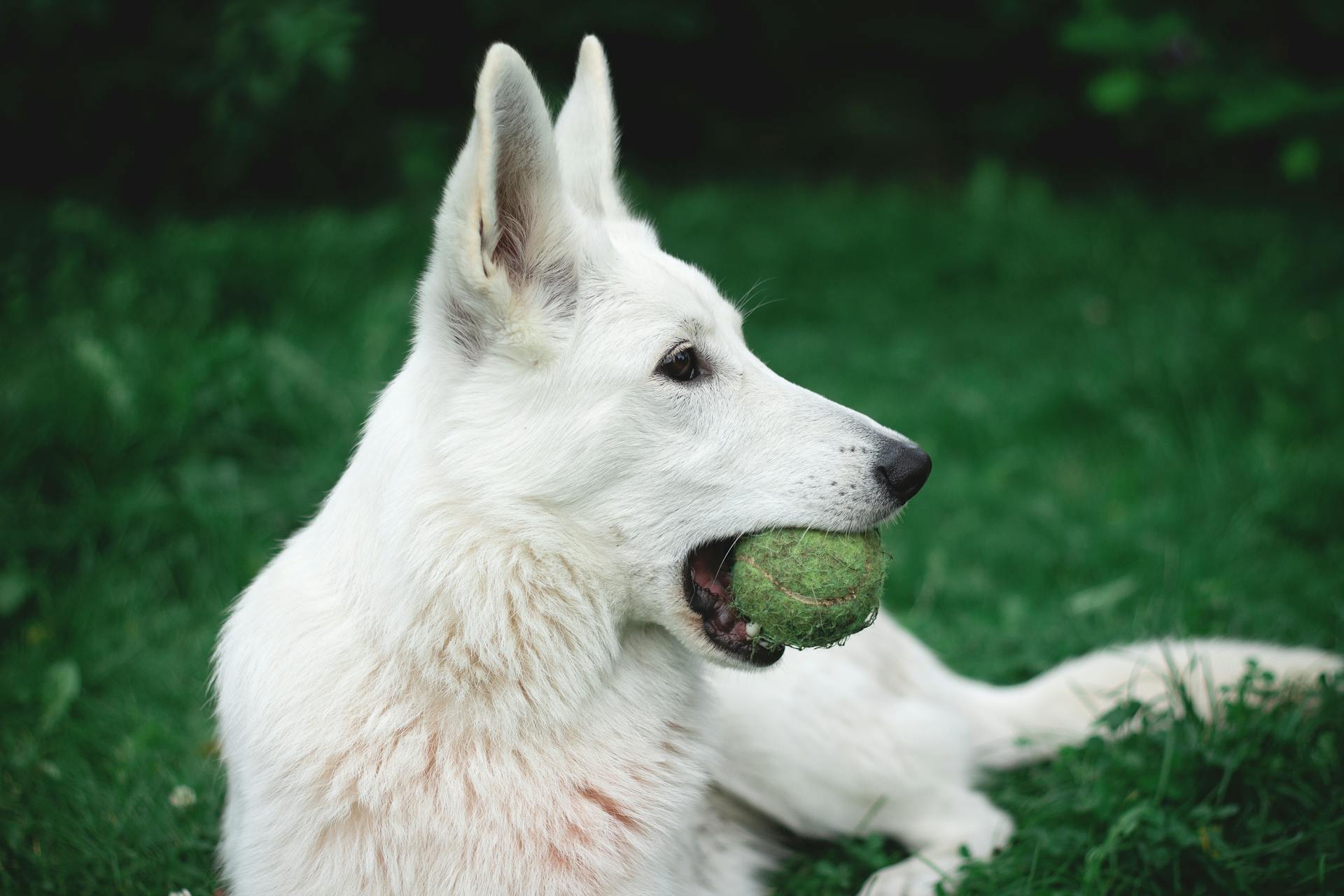
Allow your cat to see the dog while they're separated by a baby gate or glass door. This will help them get used to each other's presence without feeling threatened.
Prevent your dog from chasing and scaring your cat by keeping them on a leash or using a baby gate to block access. This will give your cat a safe space to retreat to if needed.
Make sure your cat has access to vertical space, like a cat tree or high perch, so they can easily get up and away if they want to. This will also give them a clear view of the dog while they're interacting.
Don't leave your cat and dog unsupervised until you're certain they're comfortable with each other. It may take some time, but with patience and proper introduction, they can become great friends.
Readers also liked: Sims 4 Cat and Dog Expansion Pack
Introducing the Dogs
Introducing the dogs is a crucial step in bringing home a new furry family member. It's essential to do it right to set both dogs up for success.
A gentle introduction outside the home can help reduce stress and anxiety for both dogs. Take them to a neutral area, such as a park or a safe space close to home, where they can meet without feeling territorial. Enlist a friend or family member to help you.
Use indoor leads, also called house lines, on both dogs to keep them separate if needed. Avoid narrow areas or places where there may be competition for resources, like your current dog's feeding area.
Here are some key things to keep in mind when introducing your dogs:
- Keep both dogs on their leads.
- Take them to the garden or the largest indoor neutral space possible.
- Avoid narrow areas or places where there may be competition for resources.
Adopting from Trust
Dogs are social animals whose evolutionary history makes them willing and able to live in groups. This means they can thrive with a new furry family member.
If you're adopting from Dogs Trust, their rehoming centre will arrange for your whole family to meet your potential adoptive dog - including your current dog(s). This helps set both dogs up for success by introducing them on neutral ground.
Readers also liked: Are Boxer Dogs Good Family Dogs
Dogs can build the foundations for a happy life together by meeting in a neutral environment. This is especially important when introducing a new dog to your household.
You can also get telephone-based behaviour advice after adopting, and for the whole of your dog's life. This support can be a lifesaver for both you and your furry friend.
Introducing a New Dog to My Home
Introducing a new dog to your home can be a challenging but rewarding experience for both you and your furry friends. The key is to do it right, and with patience and care, you can set your dogs up for success.
First, arrange the first meeting between the dogs outside the house, such as in a park or garden, to make your current dog feel more comfortable. Enlist a friend or family member to help you, and consider using indoor leads to separate the dogs if needed. A gentle introduction outside the home will set up both dogs for success.
It's essential to choose a neutral area for the introduction, not a place where your current dog sleeps or eats. Avoid narrow areas or places where there may be competition for resources, such as your current dog's feeding area. A garden or a large indoor space is an ideal location.
Puppies, in particular, will need some extra supervision and support as they're still learning doggy social skills. Keep both dogs on their leads, ideally indoor leads or house lines, and take them to a neutral area like the garden or a large indoor space.
Monitor closely in the home by using a sturdy, tall baby gate to separate the dogs, and observe how they interact through the gate. Reinforce positive behavior by providing high-value treats to the dogs for positive interactions. Make sure there are no toys, food, or treats left around the home that the dogs could potentially fight over.
Here are some general tips to keep in mind:
- Choose a neutral area for the introduction.
- Avoid narrow areas or places where there may be competition for resources.
- Keep both dogs on their leads, ideally indoor leads or house lines.
- Monitor closely in the home, using a sturdy, tall baby gate to separate the dogs.
- Reinforce positive behavior with high-value treats.
By following these tips and being patient, you can help your dogs build a happy and harmonious relationship. Remember, dogs are social animals, and with the right introduction, they can thrive together.
Managing the Introduction
It's essential to introduce your new dog to your current dog at a slow pace to ensure a smooth transition. Take them to a neutral area, not a place where the existing dog sleeps or a bedroom, and avoid narrow areas or places where there may be competition for resources.
Use indoor leads or house lines to keep both dogs on a leash and separate them if needed. A gentle introduction outside the home will set up both dogs for success. Keep in mind that every dog is an individual with their own unique needs and preferences.
Watch your dogs' body language for any signs of stress or discomfort. If either dog shows low-level discomfort, such as walking away from the other dog, encourage them to give each other space by calling one of them away or asking them to go to their own bed. If either dog shows significant signs of discomfort, such as barking, lunging at or snapping at the other dog, separate them immediately.
Some resources, like food, resting places, mates, territory, and favored possessions, may be considered important by your dogs. Consider these resources when introducing your new dog to your current dog, as fights may occur over access to these resources.
For your interest: How Long to Keep Dogs off New Sod?
Visitors
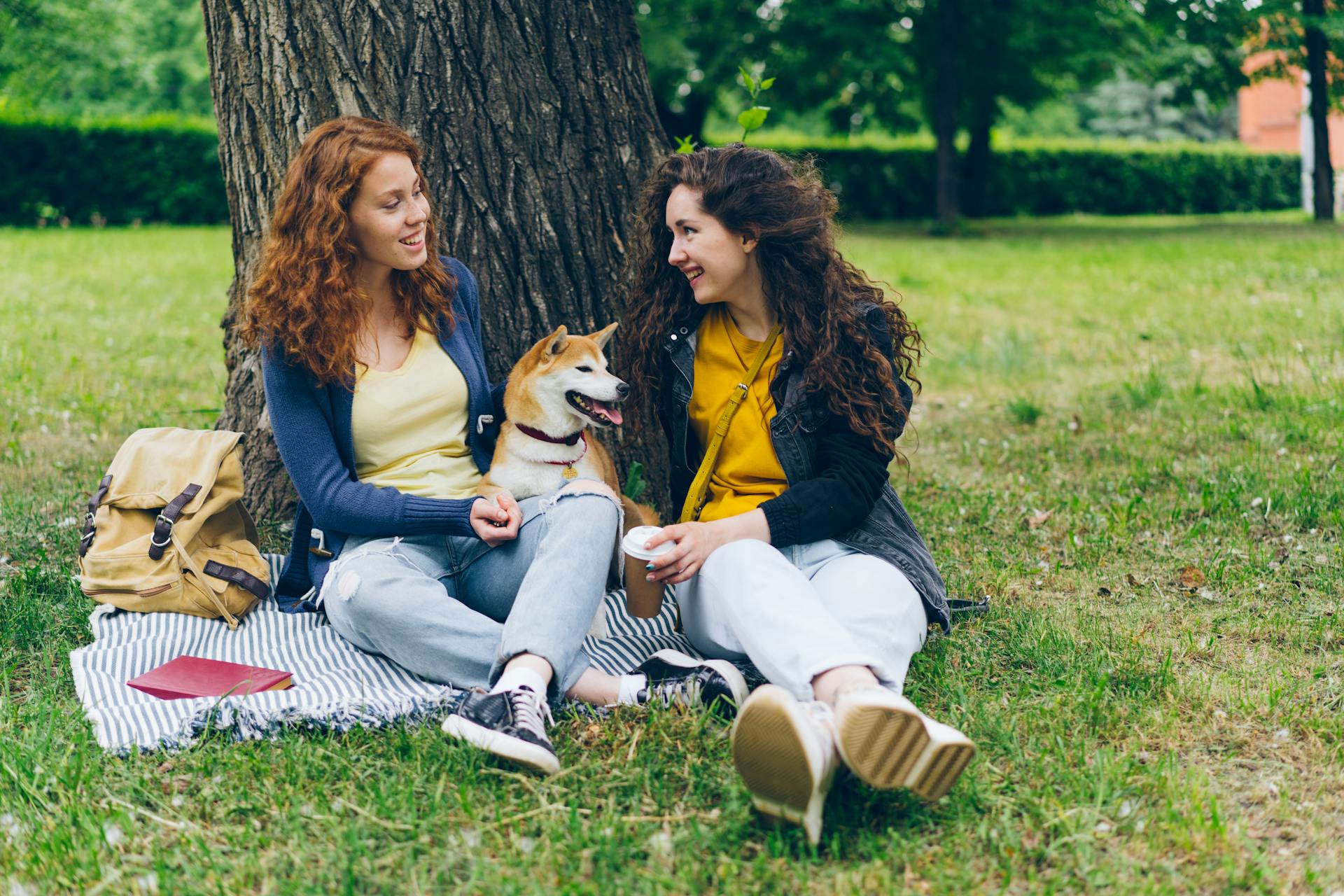
Introducing your dog to new people is crucial for their socialization, so give them many opportunities to meet new folks.
Keep your dog on their leash when introducing them to a new person, and have them sit before inviting the person to pet them.
Letting your dog jump up on someone can be overwhelming, so it's best to have them sit first.
Invite the person to pet your dog once they're sitting, and be sure to give them lots of praise.
If your dog shows any signs of being uncomfortable, it's best to move them away and try again another time.
A new home and family can be a big change for your dog, but with time, space, and comfort, most dogs will adjust and thrive.
Additional reading: How to Introduce Your Puppy to Other Dogs
Managing Tensions
If tensions arise between your dogs, it's essential to watch their body language for signs of distress. If either dog shows low-level discomfort, such as walking away or licking their lips, give them space by calling one dog away or asking them to go to their own bed.
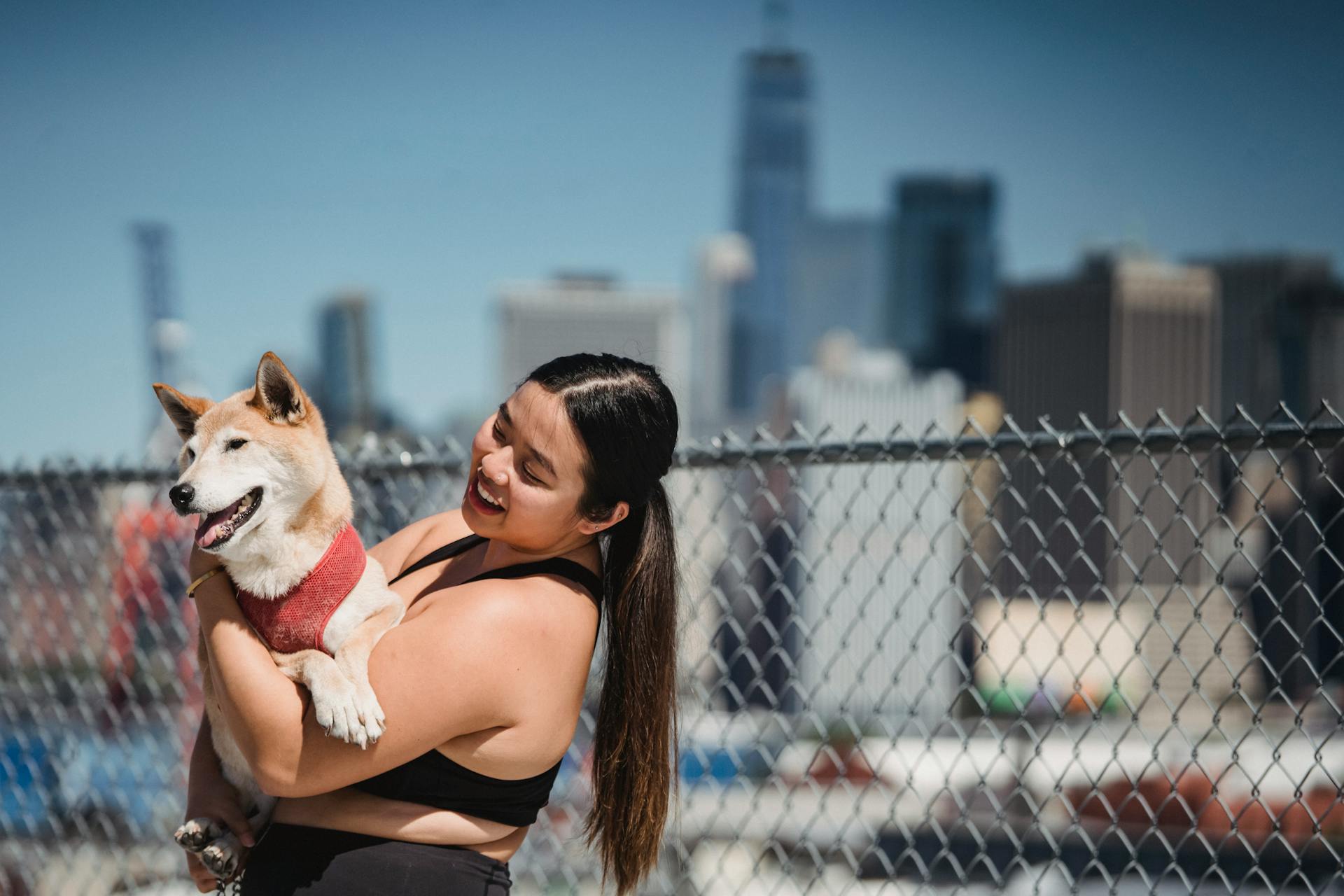
You can intervene early by recognizing subtle signs of discomfort, allowing you to give them time to relax before interacting again. If a dog shows significant signs of discomfort like barking, lunging, or snapping, separate them immediately.
If you're introducing a new dog to your household, consider the importance of resources like food, resting places, and territory. Confident dogs may challenge meeker dogs for these resources, leading to potential fights.
To avoid conflicts, try to eliminate situations that get either dog too excited or irritated. For example, if food causes problems, feed one dog outside while the other eats inside.
Some dogs may need more time to adjust to each other's presence, so be patient and let them determine the pace of the introduction. If a dog growls or shows signs of discomfort, encourage the other dog to give them space and engage them in a fun activity.
It's also crucial to oversee interactions between dogs, especially when introducing a puppy to an adult dog. Puppies need extra supervision and support as they learn doggy social skills.
Here are some key signs to look out for when managing tensions between dogs:
- Body postures indicating a defensive or wary response (e.g., hair standing up on the back, teeth baring, growling, stiff-legged gait, or prolonged stare)
- Low-level discomfort signs (e.g., walking away, licking lips)
- Significant signs of discomfort (e.g., barking, lunging, snapping)
If you notice any of these signs, calmly interrupt the interaction and offer a treat to the dogs when they look at each other in a relaxed manner. Remember, every dog is an individual with unique needs and preferences, so be aware of these differences when introducing dogs to each other.
Take a look at this: Alternative Food for Dogs Instead of Dog Food
Frequently Asked Questions
What is the 3-3-3 rule for dogs?
The 3-3-3 rule is a guideline for introducing a rescue dog to its new home, spanning three days for adjustment, three weeks for training and bonding, and three months for continued socialization and training. This structured approach helps dogs settle in and thrive in their new environment.
What not to do when introducing dogs?
When introducing dogs, avoid rushing the process, ignoring body language, and forcing interactions, as these can lead to stress and anxiety. Instead, prioritize a calm and controlled introduction to ensure a smooth and safe encounter.
How long does it take for a new dog to adjust to another dog?
It typically takes 2-4 weeks for a new dog to adjust to another dog, during which you can observe their behavior and see if they can become friends.
Sources
- https://www.luckydoganimalrescue.org/articles/tips-introducing-new-dog-your-household-pack
- https://www.petfinder.com/dogs-and-puppies/adoption/new-dog/how-to-introduce-a-new-dog/
- https://www.humanesociety.org/resources/introducing-new-dogs
- https://www.dogstrust.org.uk/dog-advice/life-with-your-dog/at-home/introducing-new-puppy
- https://vcahospitals.com/know-your-pet/dog-behavior-and-training---introducing-a-new-dog-to-your-family-dog
Featured Images: pexels.com


